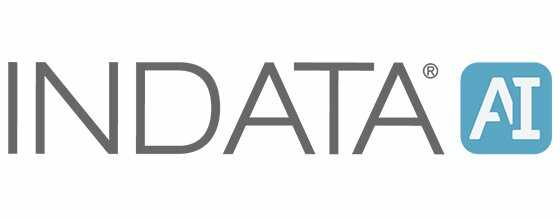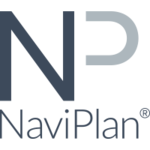Description

INDATA AI

Ledgy

NaviPlan
Comprehensive Overview: INDATA AI vs Ledgy vs NaviPlan
Here's a comprehensive overview of INDATA AI, Ledgy, and NaviPlan, covering their primary functions, target markets, market positions, and key differentiating factors:
INDATA AI
a) Primary Functions and Target Markets:
- Primary Functions: INDATA AI is focused on providing advanced software solutions for investment management. The platform utilizes artificial intelligence and machine learning to enhance investment decisions, streamline operations, and improve risk management. Key functionalities include portfolio management, compliance, trading, and operations.
- Target Markets: The primary target market for INDATA AI includes asset managers, hedge funds, wealth management firms, and institutional investors who seek to leverage technology to optimize investment processes and strategies.
b) Market Share and User Base:
- Market Share: INDATA AI operates in a niche segment of financial technology, primarily catering to institutional investors. Its market share is focused within the investment management software sector, competing with other specialized fintech solutions.
- User Base: While specific numbers are hard to ascertain, INDATA AI serves a select group of professional and institutional clients who value sophisticated portfolio and data management capabilities.
c) Key Differentiating Factors:
- AI and Machine Learning: INDATA AI differentiates itself with its robust integration of AI and machine learning to optimize investment processes.
- Customization: Offers highly customizable solutions tailored to the specific needs of investment managers, allowing for flexibility and scalability.
Ledgy
a) Primary Functions and Target Markets:
- Primary Functions: Ledgy is a platform designed for managing equity and employee ownership. It provides tools for cap table management, employee participation plans, and investor relations tracking, aiding companies in managing their shareholdings and stakeholder engagement.
- Target Markets: The target market for Ledgy includes startups, scale-ups, and established companies across various industries that need to manage their equity structures efficiently.
b) Market Share and User Base:
- Market Share: Ledgy is gaining traction within the equity management space, especially among tech startups and growing businesses in Europe and beyond.
- User Base: Its user base primarily consists of fast-growing companies looking to streamline equity management and communication with stakeholders.
c) Key Differentiating Factors:
- Focus on Equity Management: Ledgy offers specialized solutions for handling equity and employee ownership complexities, making it uniquely valuable for companies with complex stakeholder structures.
- User-Friendly Platform: Known for its intuitive interface and ease of use, aiding companies in navigating equity management without needing extensive financial expertise.
NaviPlan
a) Primary Functions and Target Markets:
- Primary Functions: NaviPlan is a comprehensive financial planning software that offers detailed, client-focused financial plans. It features retirement planning, tax analysis, cash flow management, and scenario planning.
- Target Markets: Its primary market includes financial advisors, planners, and wealth management professionals who require detailed and reliable planning tools to serve their clients effectively.
b) Market Share and User Base:
- Market Share: NaviPlan holds a significant position in the financial planning software market, serving a wide array of financial advisors and institutions.
- User Base: It serves a broad base of financial professionals, ranging from independent advisors to large financial institutions, particularly in North America.
c) Key Differentiating Factors:
- Depth of Planning Capabilities: NaviPlan is known for its deep and comprehensive planning capabilities, making it suitable for complex financial scenarios.
- Integration and Adaptability: It offers robust integration with other financial tools and systems, enhancing its functionality and adaptability for varied user needs.
Comparative Summary:
- Functionality Focus: INDATA AI focuses on investment management, Ledgy specializes in equity management, and NaviPlan is centered around financial planning.
- Target Market: Each software targets different user groups - institutional investors for INDATA AI, companies with complex equity structures for Ledgy, and financial advisors for NaviPlan.
- Differentiators: INDATA AI’s differentiator is its advanced AI capabilities; Ledgy stands out with user-friendly equity management solutions; NaviPlan offers detailed and comprehensive financial planning tools.
These products serve distinct niches within the broader financial technology landscape, each excelling in its specialized function and providing tailored solutions for its respective target market.
Contact Info

Year founded :
Not Available
Not Available
Not Available
Not Available
Not Available

Year founded :
2017
+41 44 585 21 23
Not Available
United Kingdom
http://www.linkedin.com/company/ledgy

Year founded :
Not Available
Not Available
Not Available
Not Available
Not Available
Feature Similarity Breakdown: INDATA AI, Ledgy, NaviPlan
To compare INDATA AI, Ledgy, and NaviPlan, we should consider their core functionalities, target audiences, and any available information about their interfaces and unique features. It's important to note that the specifics can vary, especially with product updates or changes, so checking their latest descriptions or reviews is recommended for precise details.
a) Core Features in Common:
-
Data Management and Analysis:
- INDATA AI: Primarily focuses on advanced data analytics and AI-driven insights for investment management.
- Ledgy: Provides equity management with data analysis for cap tables and other financial metrics.
- NaviPlan: Offers financial planning with detailed analysis tools for cash flow and net worth scenarios.
-
Reporting and Visualization:
- All three platforms likely provide robust reporting capabilities, allowing users to generate insights from data through charts, graphs, or tables. This is essential for easily digestible presentations and decision-making.
-
Integration Capabilities:
- They all probably offer integrations with other software platforms, allowing users to import/export data seamlessly to enhance productivity and data accuracy.
-
User Collaboration:
- Likely to have features that support collaborative work, enabling multiple users to interact with the data or input information concurrently.
b) User Interface Comparison:
-
INDATA AI: Focused on investment management, its UI is likely geared towards displaying complex data analytics in an intuitive way, though it might prioritize functionality over pure aesthetics.
-
Ledgy: Designed for equity management, Ledgy’s UI might emphasize ease of use for managing cap tables and stakeholder information, with a possible focus on clarity and straightforward workflows.
-
NaviPlan: As a financial planning tool, NaviPlan is likely to offer a scenario-driven interface with dashboards that clearly display financial plans, scenarios, and goals, with a potential focus on illustrative charts and client-facing reports.
c) Unique Features:
-
INDATA AI:
- Offers specialized AI-driven financial insights, which might include predictive analytics and machine learning models tailored for investment management.
-
Ledgy:
- Uniquely focuses on share plan management and stakeholder management for startups and growing companies, providing cap table management and employee engagement tools.
-
NaviPlan:
- Distinctively caters to financial advisors with client-specific planning features, detailed scenario analysis, and retirement planning tools, making it suitable for financial advisors and planners.
Summary:
While INDATA AI, Ledgy, and NaviPlan share some basic financial management and data visualization capabilities, each is tailored to a specific niche within the financial sector. INDATA AI focuses on AI-driven insights for investment management, Ledgy specializes in equity and cap table management, and NaviPlan excels in comprehensive financial planning for advisors. Their interfaces reflect their core uses: INDATA AI likely for data-driven insights, Ledgy for clean and clear equity management, and NaviPlan for scenario planning and client engagement.
Features

Data Analysis
User Management
Data Integration
AI-Powered Features
Customer Support

Fundraising and Investor Relations
Equity Management
Compliance and Reporting

Risk Management
Data Integration
Client Interaction
Financial Planning
Reporting and Compliance
Best Fit Use Cases: INDATA AI, Ledgy, NaviPlan
To provide a clear understanding of the best fit use cases for INDATA AI, Ledgy, and NaviPlan, let's examine each tool's capabilities and ideal scenarios for use:
INDATA AI
a) Best Fit Types of Businesses or Projects
- Financial Services Firms: INDATA AI is well-suited for asset managers, hedge funds, and investment managers looking to streamline portfolio management and trading operations through powerful analytics and AI-driven tools.
- Data-Intensive Operations: Companies focusing on data-driven decision-making can harness INDATA AI for advanced data analytics, reporting, and automation tasks.
d) Industry Verticals or Company Sizes
- Large to Mid-Sized Financial Institutions: With a focus on complex financial data handling and analysis, INDATA AI serves enterprises that require efficient processing and insightful analytics across their financial operations.
- Tech-Savvy Firms: Businesses that prioritize integrating AI and machine learning into their existing systems for enhanced operational efficiency.
Ledgy
b) Preferred Scenarios
- Equity Management for Startups: Ledgy is ideal for startups and growing enterprises needing a robust platform to manage equity, including shares, options, and employee participation plans.
- Financial Transparency and Employee Engagement: Companies looking to simplify equity compensation plans and improve transparency with shareholders and employees would benefit from Ledgy.
d) Industry Verticals or Company Sizes
- Startups and Scale-ups: Designed for companies that need flexibility and scalability in their equity management as they grow, particularly in the tech and innovation sectors.
- Small to Medium Enterprises (SMEs): Helps businesses that require easy-to-navigate equity management without the overhead of complex legal and financial infrastructures.
NaviPlan
c) Consideration Scenarios
- Financial Planning: NaviPlan is perfect for financial advisors and planners who need robust software for comprehensive financial planning, including retirement, tax, and estate planning.
- Client-Focused Financial Guidance: It excels in scenarios where personalized, detailed financial scenarios and projections need to be generated for clients.
d) Industry Verticals or Company Sizes
- Financial Advisory Firms: Especially beneficial for firms focused on delivering tailored financial advice and detailed planning services.
- Organizations with Comprehensive Planning Needs: Cater to a range of company sizes, particularly those in financial services providing end-to-end planning and advisory solutions to clients.
In summary, these tools cater to different needs within financial and business operations:
- INDATA AI is best for sophisticated data-driven financial environments.
- Ledgy excels in modern equity management for startups and growing businesses.
- NaviPlan shines in personalized, detailed financial planning for individuals and firms requiring tailored advisory services.
Pricing

Pricing Not Available

Pricing Not Available

Pricing Not Available
Metrics History
Metrics History
Comparing teamSize across companies
Conclusion & Final Verdict: INDATA AI vs Ledgy vs NaviPlan
When evaluating INDATA AI, Ledgy, and NaviPlan, it's important to analyze their features, pricing, user needs, and the specific context in which they will be used. Here's a comprehensive breakdown and final verdict to assist in choosing the best product for specific needs:
a) Best Overall Value:
- Ledgy appears to offer the best overall value, particularly for startups and companies with complex cap table management needs. It excels in its niche and provides robust equity management features alongside a user-friendly interface and supportive customer service.
b) Pros and Cons:
-
INDATA AI
- Pros:
- Advanced AI-driven analytics for financial data.
- Highly customizable to fit specific investment processes.
- Strong data integration capabilities with other systems.
- Cons:
- May be overkill for smaller operations or firms without complex analytical needs.
- Can require significant training and onboarding for users unfamiliar with AI-driven systems.
- Pros:
-
Ledgy
- Pros:
- Excellent for equity and cap table management.
- Detailed reporting and compliance features.
- Strong user community and support.
- Cons:
- Primarily focused on equity management, which may not suit firms looking for broader financial planning tools.
- Could be cost-prohibitive for very small startups depending on their financial constraints.
- Pros:
-
NaviPlan
- Pros:
- Comprehensive financial planning tools suitable for advisors and planners.
- Strong scenario analysis and goal-based planning features.
- Well-regarded for its accuracy in cash flow and retirement planning.
- Cons:
- Might be too specialized for those not specifically focused on long-term financial planning.
- The user interface could be less intuitive compared to competitors.
- Pros:
c) Recommendations:
-
For users deciding between these solutions, it's crucial to first assess specific needs:
- INDATA AI is best suited for larger firms or those needing advanced investment analytics that leverage AI.
- Ledgy is ideal for startups and companies that primarily need equity and cap table management, ensuring compliance and simplifying shareholder communication.
- NaviPlan is recommended for financial advisors and planners focusing on detailed, goal-oriented financial planning for their clients.
-
Consider the core problem each software addresses:
- If the goal is to manage equity and engage with investors effectively, Ledgy stands out.
- For comprehensive financial analysis with AI capabilities, INDATA AI should be considered.
- For financial planning with detailed projections and client-focused planning, NaviPlan is the go-to choice.
Ultimately, the decision will rely heavily on the specific use case, organizational size, and budget constraints of the user. Recognizing the primary function, whether it's AI-driven analytics, equity management, or detailed financial planning, will guide users to the right choice among INDATA AI, Ledgy, and NaviPlan.